Chapter 10: Technological Innovation
Chapter 10 Learning Outcomes
After reading this chapter, you should be able to do the following:
- Define “Technological Innovation”.
- Discuss the importance of technological innovation.
- Provide three examples of technological innovations emerging today.
- Provide three examples of technological innovations of the future.
- Explain the main issues surrounding the regulation of technological innovation.
Definition of Technological Innovation
Technological innovation focuses specifically on technology and how to embody it successfully in many types of innovations such as products, services, processes, profit models, channels, and customer service engagement innovations. Technological innovation can be a source of competitive advantage for organizations that seek to create value in the market. Examples of technological innovation include the Internet, quantum computing, computers, and smartphones. “Not all innovation is technological innovation, though it might seem like it at times. Many companies innovate using their existing resources and you don’t need to invent a revolutionary technology to be considered an innovator. Much innovation comes from organizational innovation and creating new business models to challenge established companies and make headway in competitive markets. Many innovative companies also pursue process innovation using existing technologies, or establish themselves as early adopters of new technologies that streamline their business.”[1]
Example of Technological Innovation in Services
An example of technological innovation in the service is SATMAP which is a software solution that uses advanced analytics to improve service in call centers. It helps companies match callers to service agents with appropriate personalities, resulting in higher rates of customer satisfaction and service-to-sales conversion.[2]
Example of Technological Innovation in Products
The creation of the digital camera, capable of taking photographs with superior image quality and without the need for film or the need to develop film, is an example of technological innovation in products. “Apple’s innovation strategy involves introducing exciting new products and improvements (iPod, iPhone, iPad, and iTunes) and using innovative business models for maximum product success. It utilizes both radical and incremental innovation to its advantage and focuses on product design and functionality.”[3]
Example of Technological Innovation in Processes
The development of robots for stock logistics, which are able to identify the items of an order and remove them on the corresponding shelves, as is currently done in Amazon warehouses, is an example of technological innovation in processes.[4]
Importance of Technological Innovation
Technological innovation is important because it touches each of our lives bringing us a higher standard of living and a better quality of life. It allows us access to global communications, e-commerce, finance and trade, and so much more. Some form of technology is used by most people in the world today.
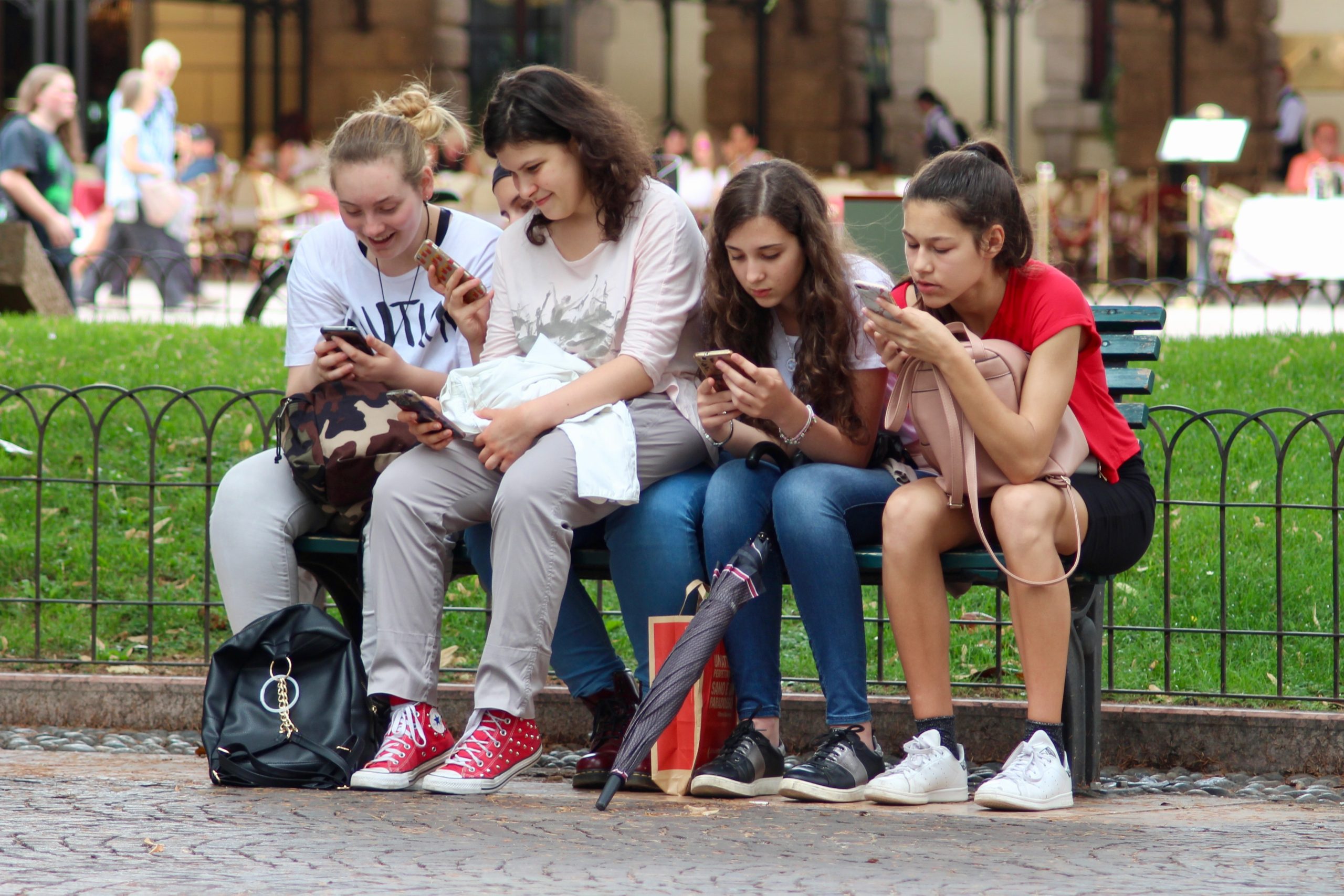
“While less than 7% of the world was online in 2000, today over half the global population has access to the internet. Similar trends can be seen in cellphone use. At the start of the 2000s, there were 740 million cell phone subscriptions worldwide. Two decades later, that number has surpassed 8 billion, meaning there are now more cellphones in the world than people. Apple sold its first iPod in 2001, and six years later it introduced the iPhone, which ushered in a new era of personal technology. These changes led to a world in which technology touches nearly everything we do.”[5]
“We are living in a time of exciting technological innovations. Digital technologies are driving transformative change. Economic paradigms are shifting. The new technologies are reshaping product and factor markets and profoundly altering business and work. The latest advances in artificial intelligence and related innovations are expanding the frontiers of the digital revolution. Digital transformation is accelerating in the wake of the COVID-19 pandemic. The future is arriving faster than expected.”[6]
Current Technological Innovations
“Digital technologies have advanced more rapidly than any innovation in our history – reaching around 50 percent of the developing world’s population in only two decades and transforming societies. In the health sector, for instance, AI-enabled frontier technologies are helping to save lives, diagnose diseases and extend life expectancy. In education, virtual learning environments and distance learning have opened up programmes to students who would otherwise be excluded. Public services are also becoming more accessible and accountable through blockchain-powered systems, and less bureaucratically burdensome as a result of AI assistance. Big data can also support more responsive and accurate policies and programmes.”[7]
Below is a list of a few of the technological innovations emerging today.
-
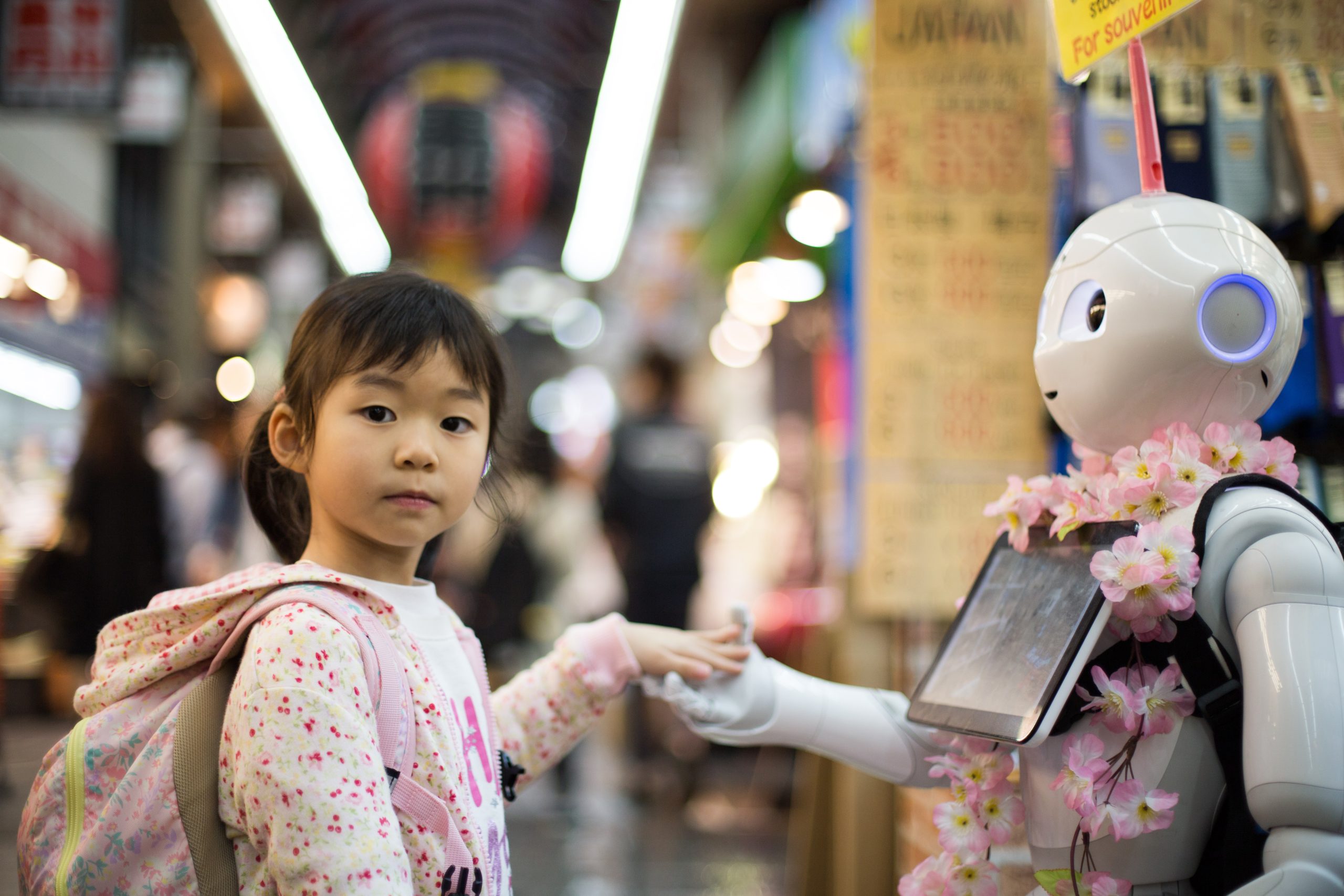
A child making friends with a robot AI. “In 1958, Lisp programming language appeared, which became the standard for AI systems. In 1959, Arthur Samuel, an MIT engineer, used the term “machine learning” for the first time. Today, we find artificial intelligence applied in several ways: virtual assistants like Alexa and Siri, autonomous vehicles, and intelligent houses, among others.”[8] “The wide range of AI innovations is expected to impact people and processes within and outside an enterprise context, making them important to understand for many stakeholders, from business leaders to the enterprise engineering teams tasked with deploying and operationalizing AI systems. There are four main categories: Data-centric AI, Model-centric AI, Applications-centric AI, and Human-centric AI.”[9]
- Extended Reality (XR). “Extended Reality (XR) is the combination of human & computer-generated graphics interaction, which is in reality as well as the virtual environment. In basic terms, Extended Reality is a superset of Augmented Reality (AR), Virtual Reality (VR) & Mixed Reality (MR). Applications for XR can be found in the entertainment industry, sales and marketing, housing and real estate, education and training, and work from home for remote areas. There are three major challenges with XR: cost, hardware, and privacy.”[10]
- Breath Testing for Disease Control. Beyond delivering results far faster than a blood draw, breath testing for infectious diseases and cancer detection could streamline medical diagnostics by providing a non-invasive way to collect critical health data.[11]
-
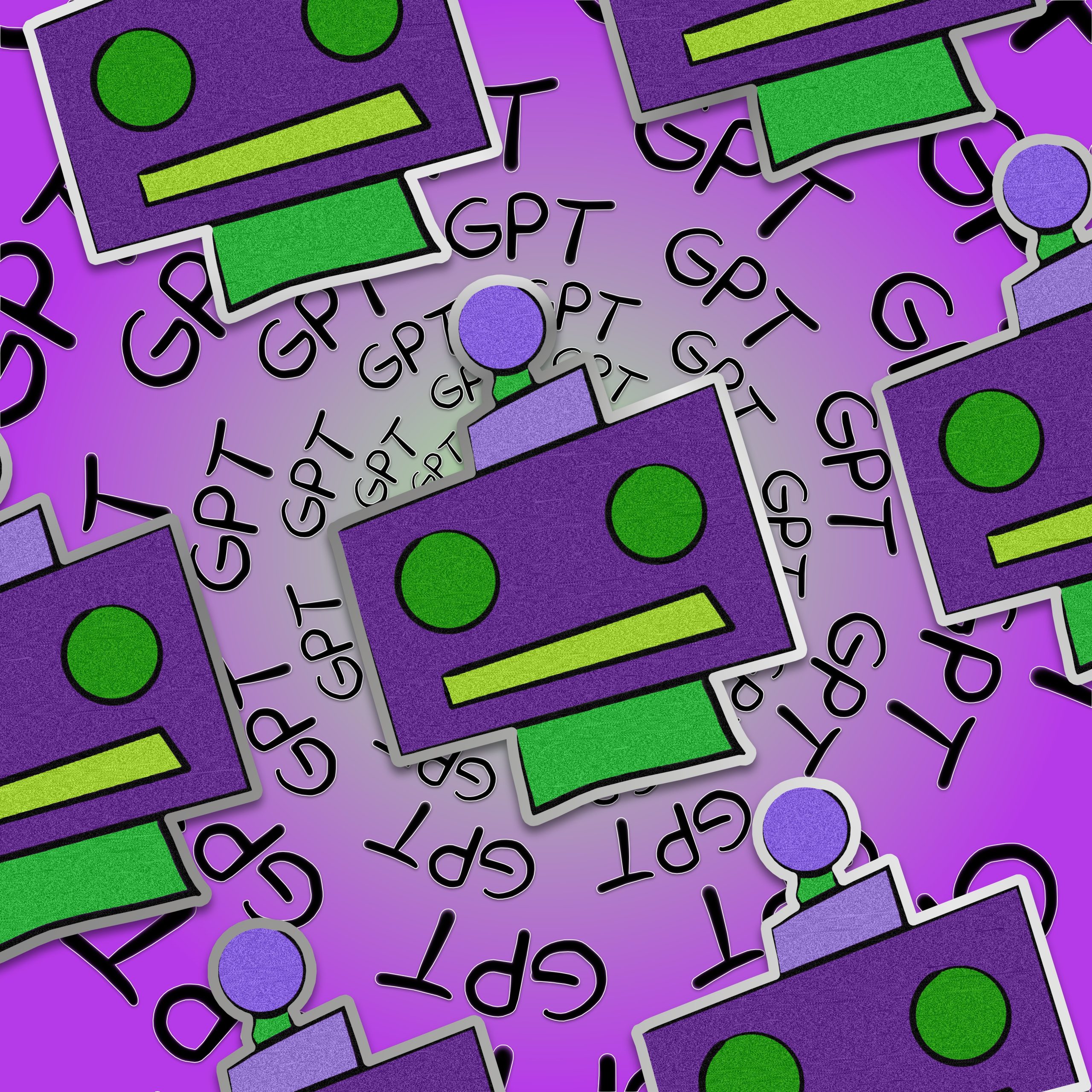
ChatGPT Generative AI Generative AI. “Generative AI, or generative artificial intelligence, is a form of machine learning that is able to produce text, video, images, and other types of content. ChatGPT, DALL-E, and Bard are examples of generative AI applications that produce text or images based on user-given prompts or dialogue. Generative AI is used in everything from creative to academic writing and translation; composing, dubbing, and sound editing; infographics, image editing, and architectural rendering; and in industries from automotive to media/entertainment to healthcare and scientific research. There are wide-ranging concerns about generative AI that touch upon legal, ethical, political, ecological, social, and economic issues.”[12] Some limitations of today’s generative AI include the following. Limited creativity and originality, as it can only create new data based on existing patterns. Bias, if the data it was trained on is biased or incomplete. Ethical concerns, such as the potential for misuse, plagiarism, or deception. “Workers across industries, from marketers and developers to product designers, have been discovering the ways in which generative AI can help them do their jobs better. This could mean creating extraordinary content in a fraction of the time, accelerating IT coding and testing processes, optimizing product simulations and design for much higher quality. In short, generative AI can give them ‘superpowers.’ In McKinsey & Company’s report, ‘The economic potential of generative AI: The next productivity frontier,; the firm’s researchers also project that generative AI can add the equivalent of $2.6 trillion to $4.4 trillion to the economy annually.”[13]
- Lithium-metal Batteries. “Electric vehicles come with a tough sales pitch; they’re relatively expensive, and you can drive them only a few hundred miles before they need to recharge—which takes far longer than stopping for gas. All these drawbacks have to do with the limitations of lithium-ion batteries. A well-funded Silicon Valley startup now says it has a battery that will make electric vehicles far more palatable for the mass consumer. It’s called a lithium-metal battery and is being developed by QuantumScape. According to early test results, the battery could boost the range of an EV by 80% and can be rapidly recharged. The startup has a deal with VW, which says it will be selling EVs with the new type of battery by 2025.”[14]
- 3D Printed Homes. Using massively scaled 3D printers, homes can be made. We already see this deployed in the U.S. and other developed nations. “In the developing world, where limited infrastructure makes shipping in materials a challenge, recent demonstrations using 3D printers take a leap ahead by employing locally sourced materials, clay, sand, and local fibers to print structures—eliminating roughly 95% of material requiring transport to a building site. This emerging technology could provide rugged shelters in remote regions, where housing needs are dire and no viable transport networks exist. The result could be a game changer for nations that are often otherwise left behind.”[15]
- Green Hydrogen. “Hydrogen has always been an intriguing possible replacement for fossil fuels. It burns cleanly, emitting no carbon dioxide; it’s energy dense, so it’s a good way to store power from on-and-off renewable sources; and you can make liquid synthetic fuels that are drop-in replacements for gasoline or diesel. But most hydrogen up to now has been made from natural gas; the process is dirty and energy intensive. The rapidly dropping cost of solar and wind power means green hydrogen is now cheap enough to be practical. Simply zap water with electricity, and presto, you’ve got hydrogen. Europe is leading the way, beginning to build the needed infrastructure.”[16]
-
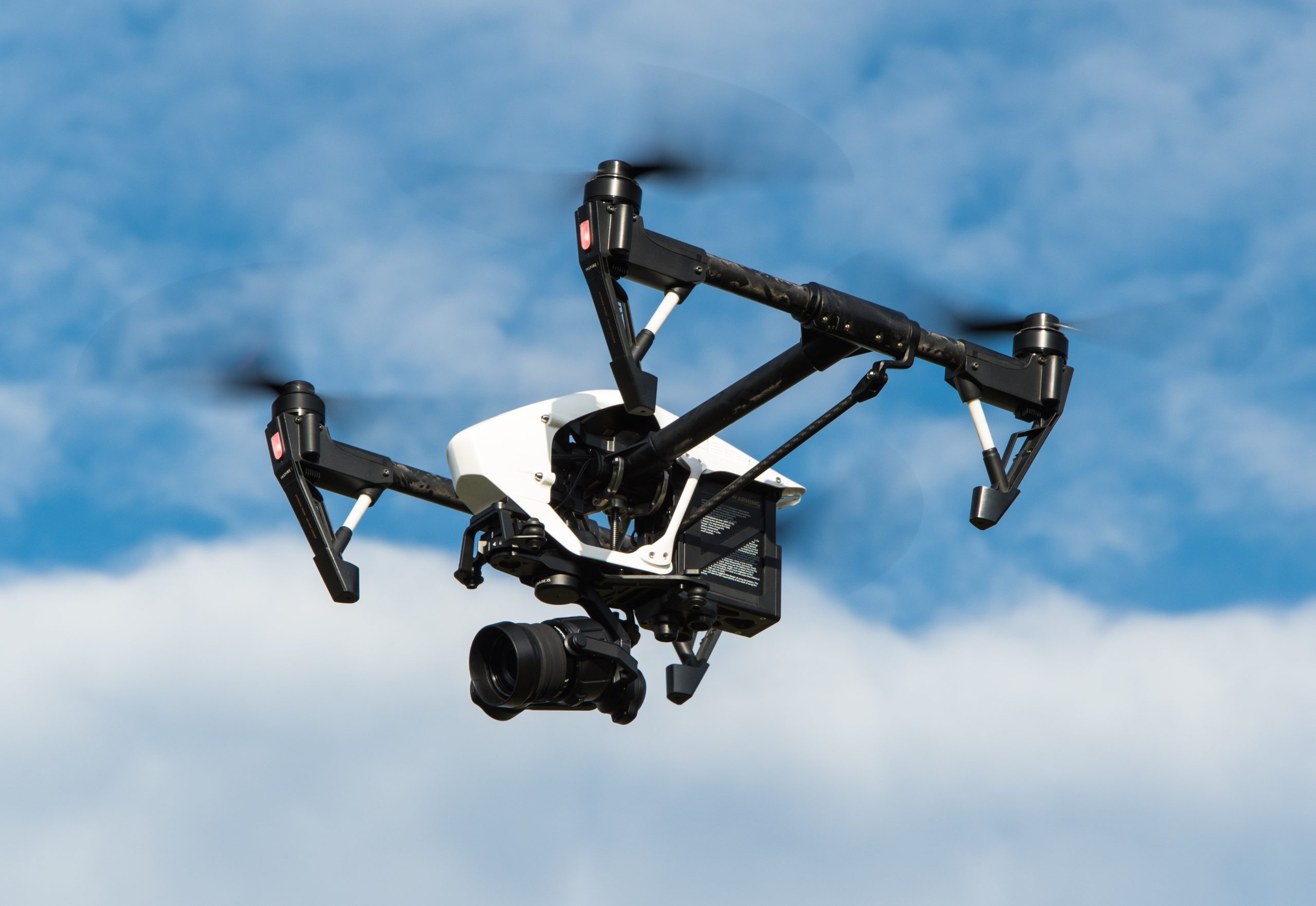
A Drone flying over crops Agricultural Drones. “Farmers have begun to use agricultural drones adorned with cameras to improve the treatment of their crops. The drones allow farmers a unique perspective that previously-used satellite imagery could not provide. They help to expose issues with irrigation treatment, soil variation, and distressed plants at a much lower cost than methods like crop imaging with a manned aircraft. The success of the drones is made possible by technological advances in GPS modules, digital radios, and small MEMS sensors. Together, these advances allow farmers to bring greater precision to their craft in order to reap greater rewards.”[17]
- Genome Editing. Scientists have the technology to edit the human genome. But when should they, and who contributes to these decisions? “CRISPR/Cas9 genome editing is an inexpensive and efficient tool to introduce changes in DNA. Its ease of use sets virtually no limits on potential scientific and clinical applications. Prospects include correcting congenital monogenic disorders, targeting disease-causing molecular lesions, and even altering multiple genetic loci at the same time. Beyond therapeutic applications, there is at least in principle the possibility that CRISPR/Cas9 can be used to enhance human traits, such as resistance to infectious diseases, strength, or cognitive capacity. Such interventions can target somatic cells in adults or be employed in embryos during early development. Genome editing at the beginning of embryonic life means that any genomic alteration introduced will pass on to the germline and propagate through future generations. These possibilities have sparked considerable debate about germline genome editing ethics, governance, and the scope of responsible use of germline interventions.”[18] “Researchers in China created a pair of monkeys with specific genetic mutations. This innovation has great implications for the field of biomedicine. The ability to alter DNA at specific locations on chromosomes makes it easier to study diseases. Researchers at MIT have expressed interest in studying brain disorders like autism and Alzheimer’s disease. CRISPR has the potential to aid researchers studying such ailments, allowing them to identify what genetic mutations actually cause the disorders.”[19]
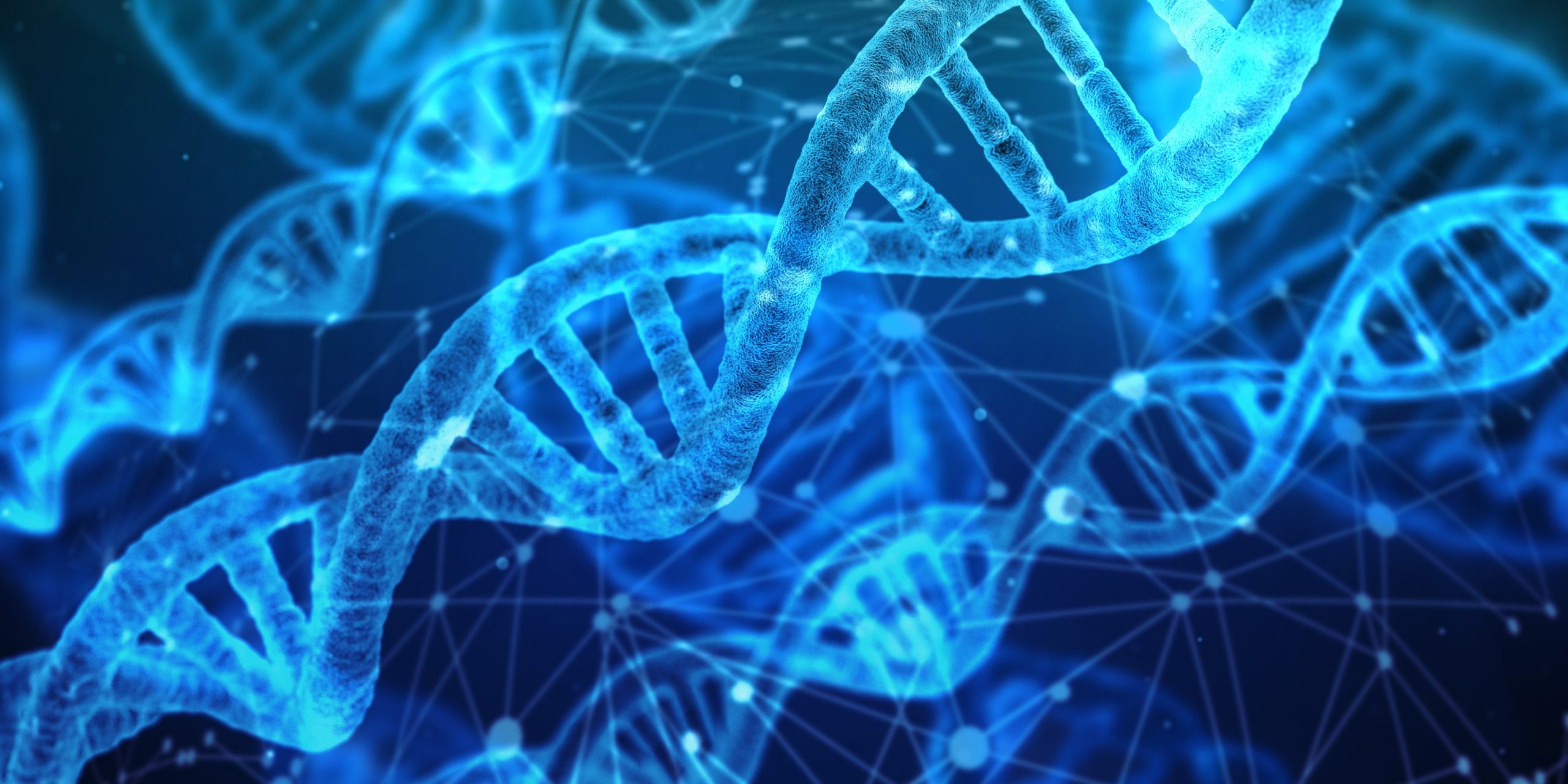
DNA Analysis There are many concerns around the ethical use of CRISPR and the differences in regulation among the countries of the world. Four main concerns have surfaced and include the following. Safety. Due to the possibility of off-target effects (edits in the wrong place) and mosaicism (when some cells carry the edit but others do not), safety is of primary concern. Some researchers argue that there may never be a time when genome editing in embryos will offer a benefit greater than that of existing technologies today. Informed Consent. Some people worry that it is impossible to obtain informed consent for germline therapy because the patients affected by the edits are the embryo and future generations. The counterargument is that parents already make many decisions that affect their future children, including similarly complicated decisions such as PGD with IVF. Researchers and bioethicists also worry about the possibility of obtaining truly informed consent from prospective parents as long as the risks of germline therapy are unknown. Justice and Equity. As with many new technologies, there is concern that genome editing will only be accessible to the wealthy and will increase existing disparities in access to health care and other interventions. Some worry that taken to its extreme, germline editing could create classes of individuals defined by the quality of their engineered genome. Morality. Some people have moral and religious objections to the use of human embryos for research. Federal funds cannot be used for any research that creates or destroys embryos.[20]
- Smart Wind and Solar Power. “SMART is an acronym for ‘System Management of Atmospheric Resource through Technology’. SMART wind is a combination of wind turbine siting and management technologies which could create nearly $150 billion in electric sector cost savings within thirty years of their implementation.”[21] “One barrier to mainstream use of renewables is integrating sustainable energy sources into the current power grid. Big data and artificial intelligence have made it easier to predict how much power wind turbines will produce. Anticipating power fluctuations is key to developing technologies for integrating wind and solar into the power grid.”[22]
Future Technological Innovations
Below is a list of a few of the technological innovations that we may see emerging in the near future.
- Necrobotics. “Sometimes new future technologies can offer amazing development, with the possibility of changing the future… while also being incredibly creepy. This is one way to describe the idea of necrobotics which, as the name suggests, involves turning dead things into robots. While this sounds like a plot to a creepy horror film, this is a technology being explored at Rice University. A team of researchers turned a dead spider into a robot-like gripper, given the ability to pick up other objects. To achieve this, they take a spider and inject it with air. This works because spiders use hydraulics to force their version of blood (haemolymph) into their limbs, making them extend. Right now this concept is in its infant stages, but it could mean a future where dead animals are used to further science… it all feels very Frankeinstein-like!”[23]
- E-skin. “While modern technology allows us to communicate verbally and visually almost anywhere in the world, there is currently no reliable method of sharing the sense of touch across long distances. Now, a wireless soft e-skin developed by engineers at the City University of Hong Kong could one day make giving and receiving hugs over the internet a reality. The e-skin is studded with flexible actuators that sense the wearer’s movements and convert them into electrical signals. These signals can then be sent to another e-skin system via Bluetooth, where the actuators convert them into mechanical vibrations that mimic the initial movements. The system could be used to allow friends and family to ‘feel’ each other over long distances, the researchers say.”[24]
- Xenotransplantation. “The procedure of transplanting, implementing or infusing a human with cells, tissues or organs from an animal source – has the potential to revolutionize surgery. One of the most common procedures performed so far is the insertion of a pig’s heart into a human. This has now successfully happened twice. However, one of the patients was only alive for a few months, and the second is still being observed. In these surgeries, the heart cannot be instantly put into a human, gene-editing needs to take place first. Certain genes need to be knocked out of the heart and human genes need to be added, mainly around immune acceptance and genes to prevent excessive growth of heart tissue. Right now, these surgeries are risky and there is no certainty around success. However, in the near future, we could see xenotransplants happening on a regular basis, providing hearts or tissues from animals to humans in need of it.”[25]
- 3D Printed Bones. “3D printing is an industry promising everything from cheap house building through to affordable rugged armour, but one of the most interesting uses of the technology is the building of 3D printed bones. The company, Ossiform, specializes in medical 3D printing, creating patient-specific replacements of different bones from tricalcium phosphate – a material with similar properties to human bones. Using these 3D printed bones is surprisingly easy. A hospital can perform an MRI which is then sent to Ossiform who create a 3D model of the patient-specific implant that is needed. The surgeon accepts the design and then once it is printed, it can be used in surgery. What is special about these 3D printed bones is that because of the use of tricalcium phosphate, the body will remodel the implants into vascularized bone. That means they will enable the full restoration of function that the bone it is replacing had. To achieve the best integration possible, the implants are of a porous structure and feature large pores and canals for cells to attach to and reform bone.”[26]
-
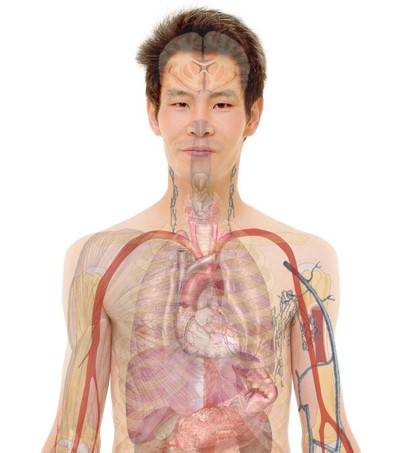
Body organs 3D Printed Organs. “Your skin is your body’s largest organ. It protects your innards, holds you together, and regulates your body’s temperature. However, since skin doesn’t perform any complex chemical-sorting or blood-pumping activities, the skin is one of the simplest organs to replicate. In theory, this should make it the easiest organ to 3D bioprint. This new research could provide the base for future effective 3D printed skin treatments to minimize the long-term and permanent damage done in burn victims.”[27]
- Energy Storing Bricks. “Scientists have found a way to store energy in the red bricks that are used to build houses. Researchers led by Washington University in St Louis, in Missouri, US, have developed a method that can turn the cheap and widely available building material into “smart bricks” that can store energy like a battery. Although the research is still in the proof-of-concept stage, the scientists claim that walls made of these bricks ‘could store a substantial amount of energy’ and can ‘be recharged hundreds of thousands of times within an hour’. The researchers developed a method to convert red bricks into a type of energy storage device called a supercapacitor. This involved putting a conducting coating, known as Pedot, onto brick samples, which then seeped through the fired bricks’ porous structure, converting them into ‘energy storing electrodes’.”[28]
- Arc Hotel. A futuristic massive dome hotel created by the Russian architectural firm, Remy Studio, will be half immersed in water and built to withstand floods, tidal waves, rising water, earthquakes, tsunamis, and just about any natural disaster there is. It is also built to be completely sustainable. It will gather energy through solar cells and it will have a rainwater collection system. The Arc Hotel is only on paper for now, but in the future, it will be a 151 thousand square foot establishment. Sounds exciting, but we may have to wait a few years before we can book a room at this hotel.[29]
- Hyperloop Trains. You know of the fast magnetic trains of Japan, well, a company named Virgin Hyperloop is trying to push things even further. The hyperloop train may be able to send people shooting across tubes at a rate of about 600 miles per hour through a low-pressure tube using electric propulsion. The vehicle floats above the track using magnetic levitation and glides at airline speeds for long distances due to ultra-low aerodynamic drag. Science fiction? Hardly, in fact, the first vehicle of the Hyperloop has already been tested and proven, and some larger tests are being scheduled for the next few years. Not only that, but the tubes are built underground so as to not disturb wildlife, and they will be made so there are no carbon emissions. Sounds promising![30]
Explore the Concept – Regulating Technological Innovation
“Sweeping technological advancements are creating a sea change in today’s regulatory environment, posing significant challenges for regulators who strive to maintain a balance between fostering innovation, protecting consumers, and addressing the potential unintended consequences of disruption. Emerging technologies such as artificial intelligence (AI), machine learning, big data analytics, distributed ledger technology, and the Internet of Things (IoT) are creating new ways for consumers to interact—and disrupting traditional business models. It’s an era in which machines teach themselves to learn; autonomous vehicles communicate with one other and the transportation infrastructure; and smart devices respond to and anticipate consumer needs.”[31]
Regulatory leaders are faced with some key challenges in figuring out how to best protect citizens, ensure fair markets, and enforce regulations while allowing these new technologies and businesses to flourish, and resisting the urge to over-regulate. “Existing regulatory structures are often slow to adapt to changing societal and economic circumstances, and regulatory agencies generally are risk-averse. Rapid adaptation to emerging technology, therefore, poses significant hurdles—and, in turn, to the technology industries, where change occurs at a rapid rate.”[32]
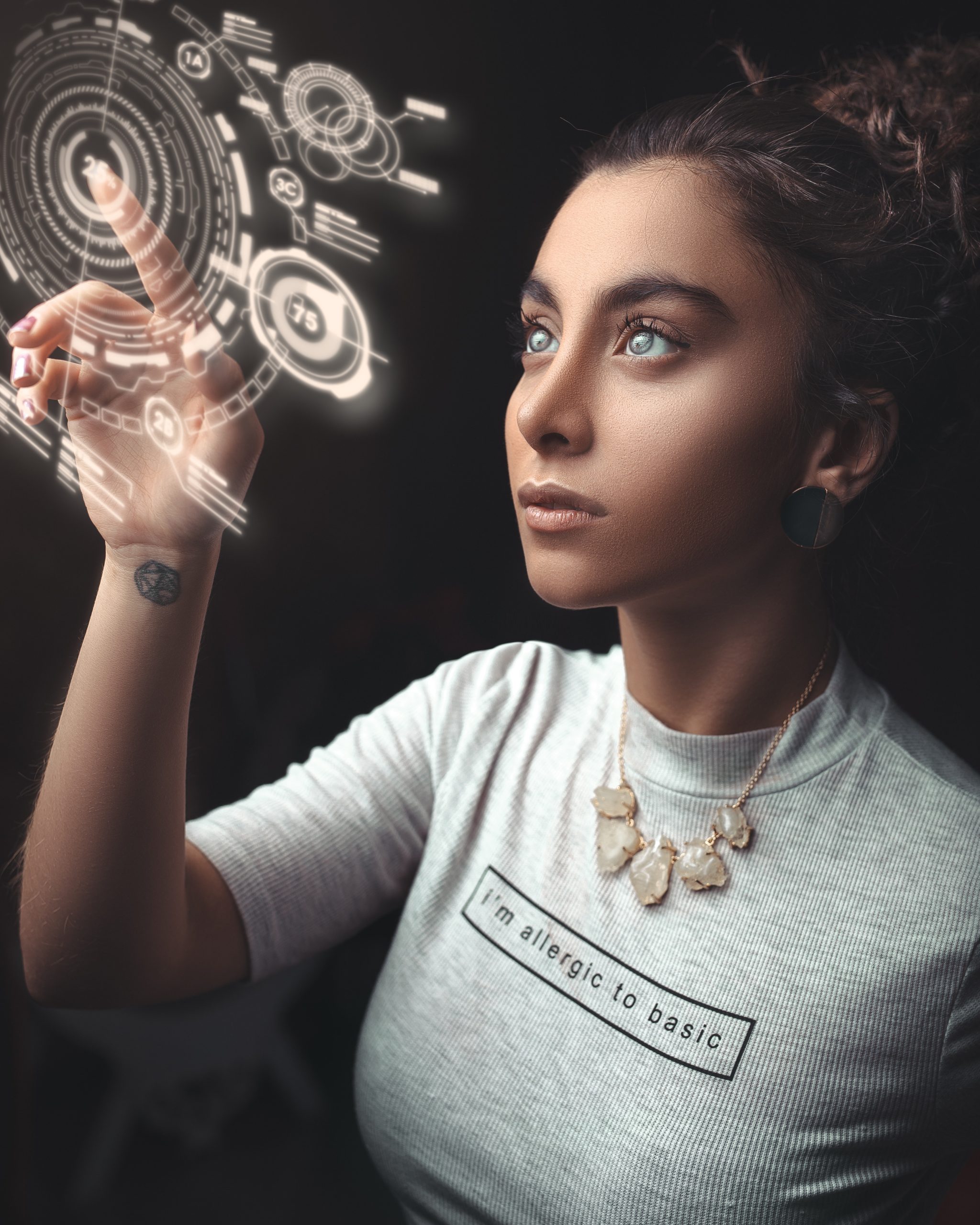
Technologies can help make our world fairer, more peaceful, and more just. Digital advances can support and accelerate the achievement of each of the 17 Sustainable Development Goals – from ending extreme poverty to reducing maternal and infant mortality, promoting sustainable farming and decent work, and achieving universal literacy. But technologies can also threaten privacy, erode security, and fuel inequality. Technologies have implications for human rights and human agency. Like generations before, we – governments, businesses, and individuals – have a choice to make in how we harness and manage new technologies.[33]
Technology can be used for positive outcomes such as overcoming some of the greatest challenges our society faces, including climate change, famine, and disease. Technological advances can help to advance economic development and lead to a better quality of life. “But it can also be a tool of tremendous fear and oppression, embedding biases in automated decision-making processes and information-processing algorithms, exacerbating economic and social inequalities within and between countries to a staggering degree, or creating new weapons and avenues for attack unlike any we have had to face in the past.”[34]
“Understanding technology and how we can make better decisions about designing, deploying, and refining it requires capturing that nuance and complexity through in-depth analysis of the impacts of different technological advancements and the ways they have played out in all their complicated and controversial messiness across the world. These impacts are often unpredictable as technologies are adopted in new contexts and come to be used in ways that sometimes diverge significantly from the use cases envisioned by their designers. The internet, designed to help transmit information between computer networks, became a crucial vehicle for commerce, introducing unexpected avenues for crime and financial fraud. Social media platforms like Facebook and Twitter, designed to connect friends and families through sharing photographs and life updates, became focal points of election controversies and political influence. Cryptocurrencies, originally intended as a means of decentralized digital cash, have become a significant environmental hazard as more and more computing resources are devoted to mining these forms of virtual money. One of the crucial challenges in this area is therefore recognizing, documenting, and even anticipating some of these unexpected consequences and providing mechanisms to technologists for how to think through the impacts of their work, as well as possible other paths to different outcomes.”[35]
“Many reforms are stimulated by technology developments which have changed the underlying cost and competitive structure in industries ranging from telecommunications to banking to biotechnology. At the same time, regulatory reform is a powerful stimulus to further innovation. Competition-enhancing reforms in both the manufacturing and service sectors have been essential to the development and diffusion of new technologies, such as the Internet, automatic teller machines, and optical scanners in supermarkets.”[36]

“Organizations like the International Organization for Standardization, the World Intellectual Property Organization, the United Nations Industrial Development Organization, and many others have tried to harmonize these policies and protocols across different countries for years, but have met with limited success when it comes to resolving the issues of greatest tension and disagreement among nations. For technology to operate in a global environment, there is a need for a much greater degree of coordination among countries and the development of common standards and norms, but governments continue to struggle to agree not just on those norms themselves but even on the appropriate venue and processes for developing them.”[37]
Without greater global cooperation, is it possible to maintain a global network like the Internet or to promote the spread of new technologies around the world to address the challenges of sustainability? What might help incentivize that cooperation moving forward, and what could new structures and processes for the governance of global technologies look like? Why has the tech industry’s self-regulation culture persisted?[38]
The growing use of smartphones, connected devices, and sensors has created a vast digital footprint in consumers’ lives—a trend that will only accelerate. From a regulatory perspective, one important question is who owns all this data—the user or the service provider who stores it? If the service provider owns the information, what obligation does it have to store and protect it? And to what extent can data be shared with third parties? Can a car manufacturer charge a higher price to car owners who refuse the right to share their private data and less to those willing to share their data? With no single global agreement on data protection, regulators around the world are taking different positions on these issues.[39]
Answering these questions in order to understand these processes requires synthesizing knowledge from a range of different fields, including sociology, political science, economics, and history, as well as technical fields such as engineering, climate science, and computer science. “A crucial part of understanding how technology has created global change and, in turn, how global changes have influenced the development of new technologies is understanding the technologies themselves in all their richness and complexity—how they work, the limits of what they can do, what they were designed to do, how they are actually used. Just as technologies themselves are becoming more complicated, so are their embeddings and relationships to the larger social, political, and legal contexts in which they exist.”[40]
For technological innovation, regulation can be a catalyst or a hindrance. As emerging technologies evolve, regulators from around the world are rethinking their approaches, adopting models that are agile, iterative, and collaborative to face the challenges posed by emerging technologies and the fourth Industrial Revolution.[41]
Key Takeaways
-
Technological innovation focuses specifically on technology and how to embody it successfully in many types of innovations such as products, services, processes, profit models, channels, and customer service engagement innovations.
- Technological innovation is important because it touches each of our lives bringing us a higher standard of living and a better quality of life. It allows us access to global communications, e-commerce, finance and trade, and so much more. Some form of technology is used by most people in the world today.
- Digital technologies have advanced more rapidly than any innovation in our history – reaching around 50 percent of the developing world’s population in only two decades and transforming societies.
- Today, we find artificial intelligence applied in several ways: virtual assistants like Alexa and Siri, autonomous vehicles, and intelligent houses, among others.
- Workers across industries, from marketers and developers to product designers, have been discovering the ways in which generative AI can help them do their jobs better.
- Beyond delivering results far faster than a blood draw, breath testing for infectious diseases and cancer detection could streamline medical diagnostics by providing a non-invasive way to collect critical health data.
- Using massively scaled 3D printers, homes can be made.
- A well-funded Silicon Valley startup now says it has a battery that will make electric vehicles far more palatable for the mass consumer. It’s called a lithium-metal battery and is being developed by QuantumScape.
- The rapidly dropping cost of solar and wind power means green hydrogen is now cheap enough to be practical.
- Farmers have begun to use agricultural drones adorned with cameras to improve the treatment of their crops.
- Scientists have found a way to store energy in the red bricks that are used to build houses.
- A futuristic massive dome hotel called the Arc Hotel created by the Russian architectural firm, Remy Studio, will be half immersed in water and built to withstand floods, tidal waves, rising water, earthquakes, tsunamis, and just about any natural disaster there is.
- The Hyperloop train may be able to send people shooting across tubes at a rate of about 600 miles per hour through a low-pressure tube using electric propulsion.
- The idea of necrobotics involves turning dead things into robots.
- A wireless soft e-skin developed by engineers at the City University of Hong Kong could one day make giving and receiving hugs over the internet a reality.
- The procedure of transplanting, implementing, or infusing a human with cells, tissues, or organs from an animal source, known as xenotransplantation – has the potential to revolutionize surgery.
- The company, Ossiform, specializes in medical 3D printing, creating patient-specific replacements of different bones from tricalcium phosphate – a material with similar properties to human bones.
- Since skin doesn’t perform any complex chemical-sorting or blood-pumping activities, the skin is one of the simplest organs to replicate. In theory, this should make it the easiest organ to 3D bioprint.
- Researchers in China created a pair of monkeys with specific genetic mutations. The scientists used a new method of DNA engineering known as CRISPR. CRISPR allows scientists to modify fertilized eggs (genome editing). This innovation has great implications for the field of biomedicine.
- Big data and artificial intelligence have made it easier to predict how much power wind turbines will produce. Anticipating power fluctuations is key to developing technologies for integrating wind and solar into the power grid.
- Extended Reality is a superset of Augmented Reality (AR), Virtual Reality (VR) & Mixed Reality (MR). Applications for XR can be found in the entertainment industry, sales and marketing, housing and real estate, education, and training, and work from home for remote areas.
- Sweeping technological advancements are creating a sea change in today’s regulatory environment, posing significant challenges for regulators who strive to maintain a balance between fostering innovation, protecting consumers, and addressing the potential unintended consequences of disruption.
End-of-Chapter Exercises
- New Technological Innovations. Search YouTube to find a video that shares new technological innovations. Locate an innovation that you personally (or your family) might use. Is it available for sale at this point in time? Do you think other people would want to buy it? Why or why not? Share your findings with your class and professor.
- Generative AI Research. Search the Internet to find information on various generative AI tools. ChatGPT is a popular tool, but you may select any tool (e.g., Copy.ai, Murf.ai, Designs.ai, Synthesia, Descript). Research how the AI tool works, how accurate it is, what it is currently being used for, and whether or not there are any issues around intellectual property rights. Share your findings with your class and/or professor.
- ChatGPT Practice. Read the McKinsey & Company report on Generative AI can give you “superpowers”. Do you agree with what you have read? Have you used an AI tool such as ChatGPT? Give it a try. Go to https://chat.openai.com/ or chat.openai.com/auth/login and sign up. Using ChatGPT can you generate the lyrics to a song about how much you love your family? Using ChatGPT can you generate a resume to apply for a retail customer service position (or any other position)? Review what ChatGPT generated. Are there errors or omissions? Are there things you would change? Share your experience with your class and/or professor.
- Genome Editing. Search the Internet to explore the advances being made with genome editing. Can we correct people’s eyesight? Can we create a baby that has a specific eye colour or hair colour? Can we regrow an adult tooth if we lose one? Can we clone a person? What is actually possible at this point in time? Choose a question to focus on and conduct your research. Consider the ethics pertaining to genome editing as you do your research. Share your findings with your class and professor.
- Future Innovation. Search the Internet to find innovations being worked on today that we might see in our future (do not use examples provided in the chapter). Your professor may assign a specific topic or field of study. Find some innovation you feel strongly about, read about it, then share what you learned with your class and professor.
- Extended Reality. Search the Internet to find a specific example of how extended reality is being used in one of these specific areas: the entertainment industry, sales and marketing, housing and real estate, education and training, and work from home for remote areas. Share this specific example of how extended reality is being applied in the industry you selected to research with your class and professor.
- Technology and Privacy. Are you worried about the technologies you use and the idea that you may be being observed through these technologies? Maybe you have never thought of that, but some people do worry about this very thing. Search the Internet to read about concerns people may have about using cell phones, laptop webcams, home systems such as Alexa or Google Assistant, and other Smart Home technologies. What do you think? Should you be concerned? What do you do, or what can you do, to ensure you not compromising your privacy? Share your findings and conclusions with your class and professor.
- Technology and Equity. Search the Internet to explore the ways in which innovations are being created to support developing countries where populations may not have the same access to technologies that North Americans have. Which parts of the world have access to cell phones and the Internet, and which parts do not? Which organizations are helping to support equity and access across the globe? Share your findings with your class and professor.
- Regulatory Challenges. Search the Internet to find information on technological innovation regulatory challenges. Locate one specific challenge government(s) are having and how they are working to combat it. Share your findings with your class and professor.
- Data Ownership. Search the Internet to find an example of a company that either lost customer data, sold it, or says they own it. What are the issues around this situation? Share your findings with your class and professor.
- Innovation Regulation Podcast. Listen to one of the podcasts at Alliance for Innovation Regulation and write a brief summary of what you learned. Report back to your class and professor.
Additional Resources
- 11 Successful Products Originally Invented for Something Else
- ChatGPT is Great, You are Just Using it Wrong
- How Good is ChatGPT at Diagnosing Disease
- AI by McKinsey, Generative AI
- How ChatGPT Could Impact the Job Market, YouTube Video
- Generative Artificial Intelligence in Teaching and Learning at McMaster University
- What Jobs Are Safe From AI, YouTube Video
- How has technology changed – and changed us – in the past 20 years?
- 13 Amazing Inventions You Should See, YouTube Video
- Virtual Reality, Augmented Reality, Mixed Reality, YouTube Video
- 11 Technologies We Are Still Waiting For
- Top 10 Emerging Technologies in 2023
- Impact of Voluntary Environmental Regulation on Green Technological Innovation: Evidence From Chinese Manufacturing Enterprises
- How Regulatory Frameworks Drive Technological Innovations
- AI and the Future of Education, University of Toronto, YouTube Video
References
(Note: This list of sources used is NOT in APA citation style instead the auto-footnote and media citation features of Pressbooks were utilized to cite references throughout the chapter and generate a list at the end of the chapter.)
Media Attributions
- Students Using Cell Phones © Gary Cassel is licensed under a CC0 (Creative Commons Zero) license
- A child making friends with a robot © Andy Kelly is licensed under a CC0 (Creative Commons Zero) license
- ChatGPT Generative AI © PinPals_Design is licensed under a CC0 (Creative Commons Zero) license
- Drone © Thomas Ehrhardt is licensed under a CC0 (Creative Commons Zero) license
- DNA Analysis © Gerd Altmann is licensed under a CC0 (Creative Commons Zero) license
- Body organs © Gerd Altmann is licensed under a CC0 (Creative Commons Zero) license
- Person using future technology © Ali Pazani is licensed under a CC0 (Creative Commons Zero) license
- Flags of countries in front of the United Nations © BASICS is licensed under a CC0 (Creative Commons Zero) license
- The MBA.com Team. (2022, November 27). The four types of innovation – And where to study them at business school. https://www.mba.com/business-school-and-careers/why-business-school/four-types-of-innovation ↵
- D’Emidio, T., Dorton, D. & Duncan, E. (2015, February 1). Service innovation in a digital world. https://www.mckinsey.com/capabilities/operations/our-insights/service-innovation-in-a-digital-world ↵
- paddle. (n.d.). Product innovation strategy: Types, benefits, and processes (w. examples). https://www.paddle.com/resources/product-innovation ↵
- Edwards, A. (2019, June 22). What is technological innovation? https://hofstradrc.org/what-is-technological-innovation/ ↵
- Hillyer, M. (2020, November 18). How has technology changed - and changed us - in the past 20 years? https://www.weforum.org/agenda/2020/11/heres-how-technology-has-changed-and-changed-us-over-the-past-20-years/ ↵
- Qureshi, Z. (2022, January 18). How digital transformation is driving economic change. https://www.brookings.edu/articles/how-digital-transformation-is-driving-economic-change/ ↵
- United Nations. (n.d.). UN75 2020 and beyond: The impact of digital technologies. https://www.un.org/en/un75/impact-digital-technologies ↵
- Edwards, A. (2019, June 19). What is technological innovation?https://hofstradrc.org/what-is-technological-innovation/ ↵
- Wiles, J. (2022, September 15). What’s new in artificial intelligence from the 2022 Gartner hype cycle. https://www.gartner.com/en/articles/what-s-new-in-artificial-intelligence-from-the-2022-gartner-hype-cycle ↵
- SagarBopodara. (n.d.). What is extended reality? https://www.geeksforgeeks.org/what-is-extended-reality/ ↵
- Breathonix. (n.d.). Breathonix diagnostics reimagined. https://breathonix.com/ ↵
- Bell, E. (2023, May 26). Generative AI: How it works, history, and pros and cons. https://www.investopedia.com/generative-ai-7497939 ↵
- McKinsey & Company. (2023, July 6). Generative AI can give you “superpowers,” new McKinsey research finds. https://www.mckinsey.com/about-us/new-at-mckinsey-blog/generative-ai-can-give-you-superpowers-new-mckinsey-research-finds ↵
- MIT Technology Review. (2021, February 24). 10 breakthrough technologies 2021. https://www.technologyreview.com/2021/02/24/1014369/10-breakthrough-technologies-2021/ ↵
- DiChristina, M. & Myerson, B. (2021, November 16). These are the top 10 emerging technologies of 2021. https://www.weforum.org/agenda/2021/11/these-are-the-top-10-emerging-technologies-of-2021/ ↵
- MIT Technology Review. (2021, February 24). 10 breakthrough technologies 2021. https://www.technologyreview.com/2021/02/24/1014369/10-breakthrough-technologies-2021/ ↵
- Bleiberg, J. & Schaub, H. (2014, June 10). 10 New Innovations That Could Change the World. https://www.brookings.edu/articles/10-new-innovations-that-could-change-the-world/#:~:text=10%20New%20Innovations%20That%20Could%20Change%20the%20World,Collaboration%20...%208%20Oculus%20Rift%20...%20More%20items ↵
- McConnell, S. C., and Blasimme, A. (2019, December). Ethics, values, and responsibility in human genome editing. https://journalofethics.ama-assn.org/article/ethics-values-and-responsibility-human-genome-editing/2019-12 ↵
- Bleiberg, J. & Schaub, H. (2014, June 10). 10 New Innovations That Could Change the World. https://www.brookings.edu/articles/10-new-innovations-that-could-change-the-world/#:~:text=10%20New%20Innovations%20That%20Could%20Change%20the%20World,Collaboration%20...%208%20Oculus%20Rift%20...%20More%20items ↵
- National Human Genome Institute. (2017, August 3). What are the ethical concerns of genome editing? https://www.genome.gov/about-genomics/policy-issues/Genome-Editing/ethical-concerns ↵
- Whittemore, S. (2019, March 26). A SMART way to enhance the generation capabilities of wind power plants. https://www.theenergy.coop/blog/smart-wind/#:~:text=%E2%80%9CSMART%E2%80%9D%20is%20an%20acronym%20for%20%E2%80%9CSystem%20Management%20of,cost%20savings%20within%20thirty%20years%20of%20their%20implementation. ↵
- Bleiberg, J. & Schaub, H. (2014, June 10). 10 New Innovations That Could Change the World. https://www.brookings.edu/articles/10-new-innovations-that-could-change-the-world/#:~:text=10%20New%20Innovations%20That%20Could%20Change%20the%20World,Collaboration%20...%208%20Oculus%20Rift%20...%20More%20items ↵
- Science Focus. (2023, July 7). Future technology: 22 ideas about to change our world. https://www.sciencefocus.com/future-technology/future-technology-22-ideas-about-to-change-our-world/ ↵
- Science Focus. (2023, July 7). Future technology: 22 ideas about to change our world. https://www.sciencefocus.com/future-technology/future-technology-22-ideas-about-to-change-our-world/ ↵
- Science Focus. (2023, July 7). Future technology: 22 ideas about to change our world. https://www.sciencefocus.com/future-technology/future-technology-22-ideas-about-to-change-our-world/ ↵
- Science Focus. (2023, July 7). Future technology: 22 ideas about to change our world. https://www.sciencefocus.com/future-technology/future-technology-22-ideas-about-to-change-our-world/ ↵
- 3DSourced. (2023, July 12). 6 exciting 3D printed organs & 3D bioprinting projects. https://www.3dsourced.com/guides/3d-printed-organs-bioprinting/ ↵
- Science Focus. (2023, July 7). Future technology: 22 ideas about to change our world. https://www.sciencefocus.com/future-technology/future-technology-22-ideas-about-to-change-our-world/ ↵
- Top Generality. (2023, February 27). 15 emerging technologies that will change the world #2. [Video]. YouTube. https://youtu.be/y6IpTExIiSg ↵
- Insane Curiosity. (2020, February 27). The world in 2050: Future technology. [Video]. YouTube. https://youtu.be/Oa9aWdcCC4o ↵
- Eggers, W. D., Turley, M., & Klshnanl, P. K. (2018, June 19). The future of regulation: Principles for regulating emerging technologies. https://www2.deloitte.com/us/en/insights/industry/public-sector/future-of-regulation/regulating-emerging-technology.html ↵
- Eggers, W. D., Turley, M., & Klshnanl, P. K. (2018, June 19). The future of regulation: Principles for regulating emerging technologies. https://www2.deloitte.com/us/en/insights/industry/public-sector/future-of-regulation/regulating-emerging-technology.html ↵
- United Nations. (n.d.). UN75 2020 and beyond: The impact of digital technologies. https://www.un.org/en/un75/impact-digital-technologies ↵
- Wolff, J. (2021). How is technology changing the world, and how should the world change technology? https://online.ucpress.edu/gp/article/2/1/27353/118411/How-Is-Technology-Changing-the-World-and-How ↵
- Wolff, J. (2021). How is technology changing the world, and how should the world change technology?https://online.ucpress.edu/gp/article/2/1/27353/118411/How-Is-Technology-Changing-the-World-and-How ↵
- OECD. (n.d.). Regulatory reform and innovation. https://www.oecd.org/sti/inno/2102514.pdf ↵
- Wolff, J. (2021). How is technology changing the world, and how should the world change technology? https://online.ucpress.edu/gp/article/2/1/27353/118411/How-Is-Technology-Changing-the-World-and-How ↵
- Wolff, J. (2021). How is technology changing the world, and how should the world change technology? https://online.ucpress.edu/gp/article/2/1/27353/118411/How-Is-Technology-Changing-the-World-and-How ↵
- Eggers, W. D., Turley, M., & Klshnanl, P. K. (2018, June 19). The future of regulation: Principles for regulating emerging technologies. https://www2.deloitte.com/us/en/insights/industry/public-sector/future-of-regulation/regulating-emerging-technology.html ↵
- Wolff, J. (2021). How is technology changing the world, and how should the world change technology? https://online.ucpress.edu/gp/article/2/1/27353/118411/How-Is-Technology-Changing-the-World-and-How ↵
- Eggers, W. D., Turley, M., & Klshnanl, P. K. (2018, June 19). The future of regulation: Principles for regulating emerging technologies. https://www2.deloitte.com/us/en/insights/industry/public-sector/future-of-regulation/regulating-emerging-technology.html ↵
focuses specifically on technology and how to embody it successfully in many types of innovations such as products, services, processes, profit models, channels, and customer service engagement innovations.

